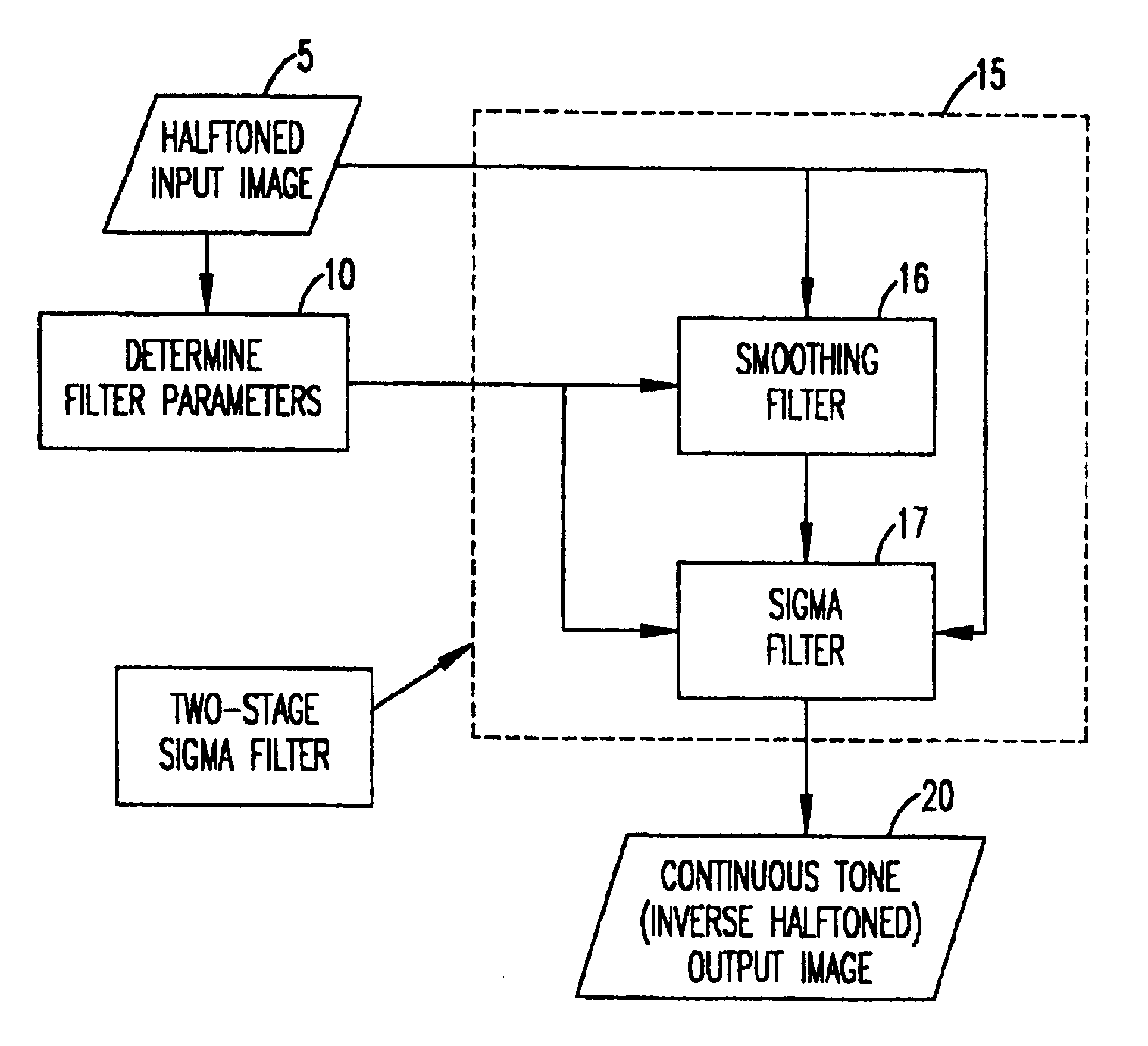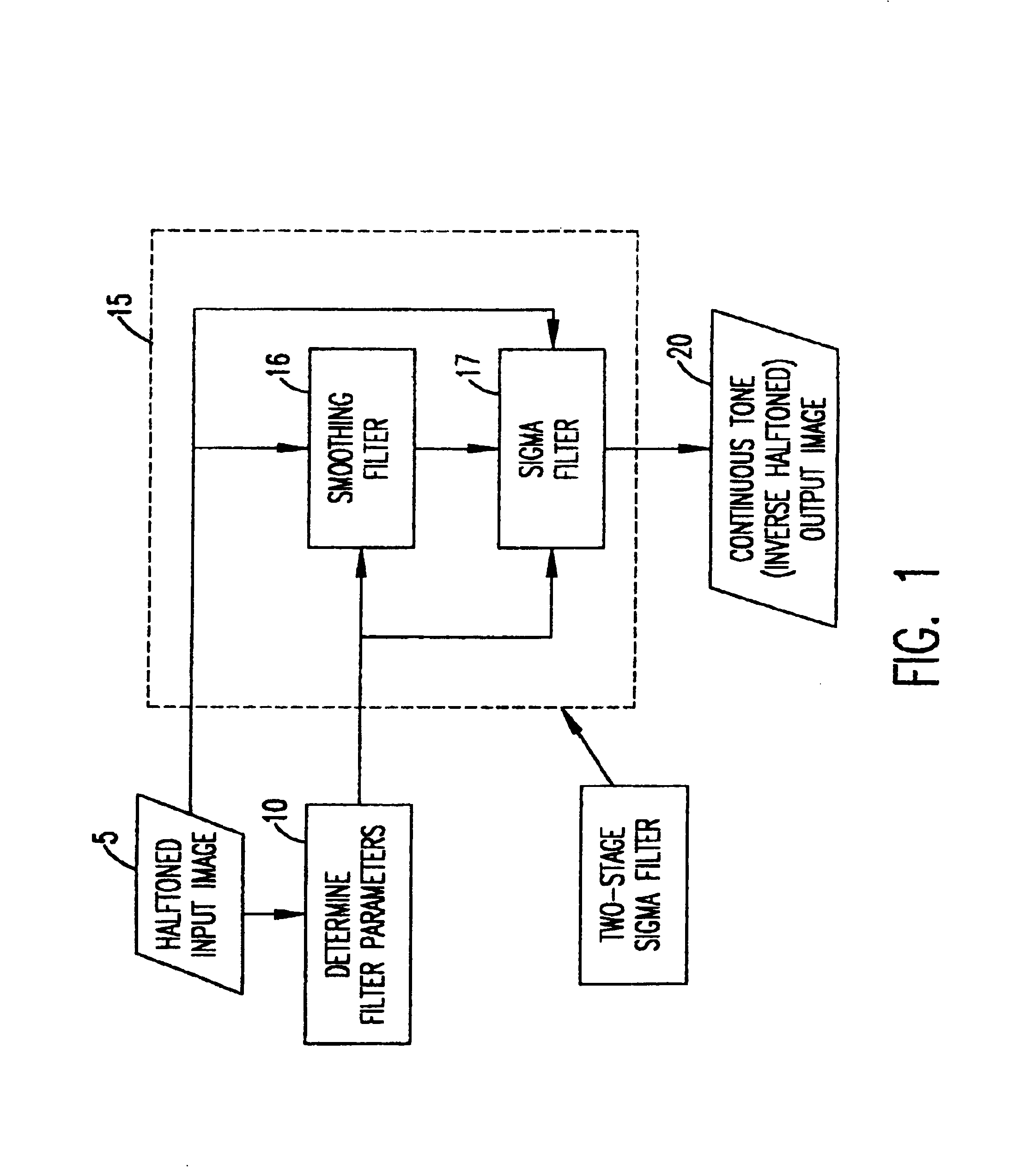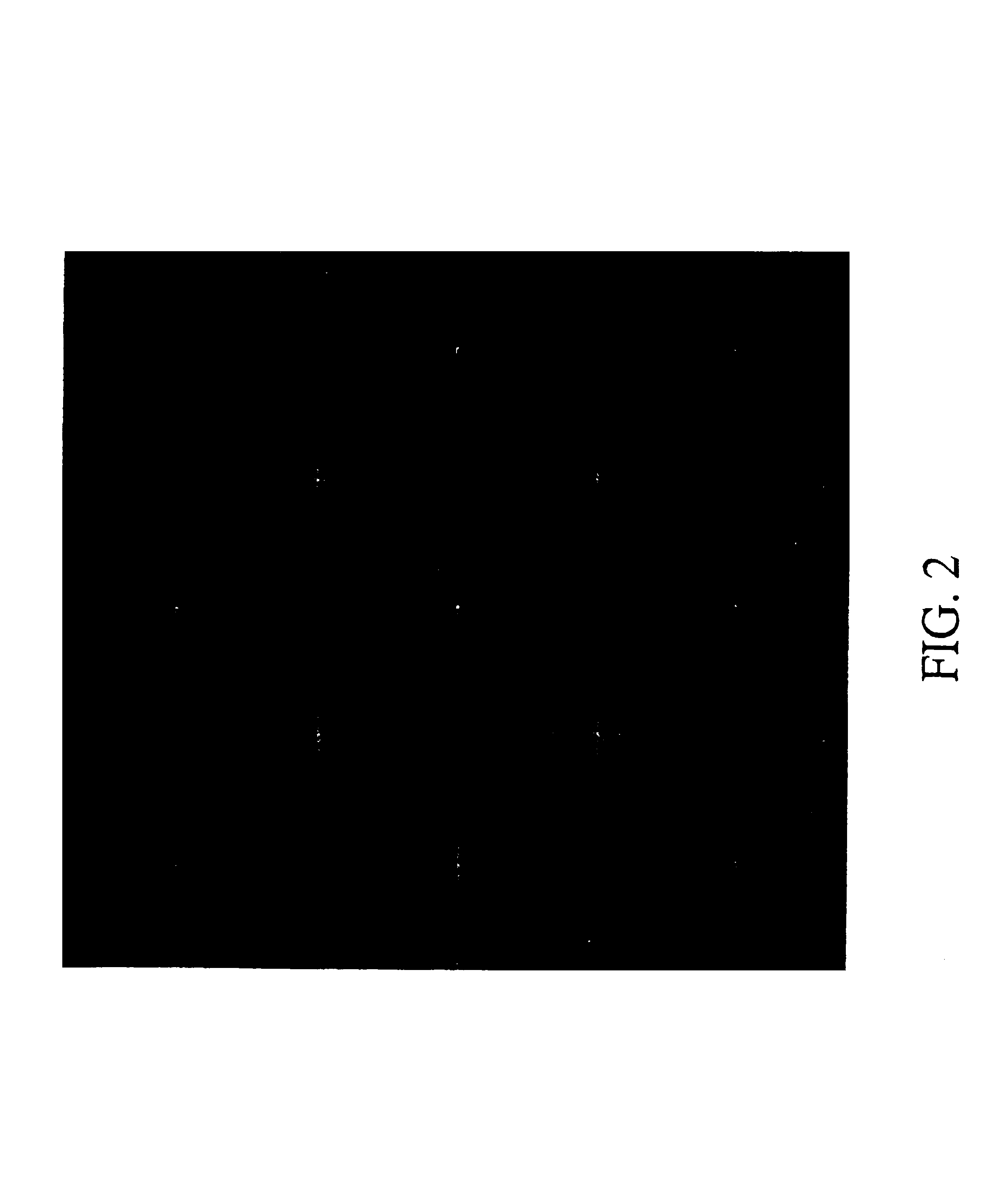De-screening halftones using sigma filters
a filter and halftone technology, applied in the field of digital printing and imaging, can solve the problems of difficult application of de-screening images generated by repetitive screens, degrade the quality of reproduced documents, and cannot go out of print using this technology, so as to reduce the degradation of edges and image detail, and slow down the manual process
- Summary
- Abstract
- Description
- Claims
- Application Information
AI Technical Summary
Benefits of technology
Problems solved by technology
Method used
Image
Examples
Embodiment Construction
[0027]The present invention is a system and method which de-screens a halftone image into a continuous-tone image with improved quality compared with those generated by conventional de-screening methods. The present invention achieves this improved quality by using a unique two-staged filter which includes a smoothing filter connected to a sigma filter.
[0028]More specifically, simply applying a conventional sigma filter to de-screen halftone images has proven undesirable, as the sigma filter will preserve the discontinuities arising from halftone dots. The present invention overcomes this problem using its two-stage sigma filter, i.e., by coupling a smoothing filter (e.g., a low-pass filter) with a sigma filter. Instead of selecting pixels based on raw halftone image values, as is conventionally done, a low-pass filtered image f1(x,y) is first generated. Pixels belonging to the same class as the center pixel in the low pass filtered image f1(x,y) are then selected based on an estima...
PUM
 Login to View More
Login to View More Abstract
Description
Claims
Application Information
 Login to View More
Login to View More - R&D
- Intellectual Property
- Life Sciences
- Materials
- Tech Scout
- Unparalleled Data Quality
- Higher Quality Content
- 60% Fewer Hallucinations
Browse by: Latest US Patents, China's latest patents, Technical Efficacy Thesaurus, Application Domain, Technology Topic, Popular Technical Reports.
© 2025 PatSnap. All rights reserved.Legal|Privacy policy|Modern Slavery Act Transparency Statement|Sitemap|About US| Contact US: help@patsnap.com



